Why Does The Steel Building Gauge Really Matter?
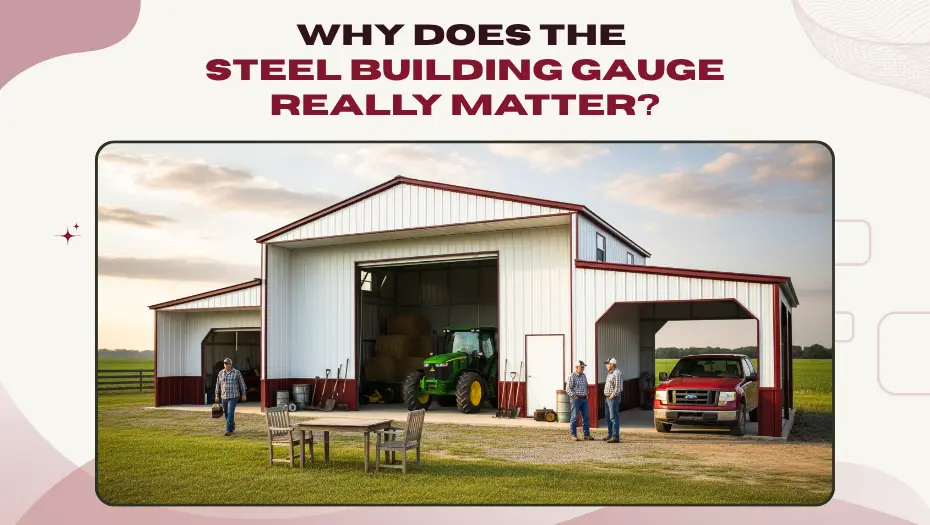
When you plan a steel building, whether it’s a barn, warehouse, or garage, one small detail can make a huge difference, and that is the thickness (Gauge) of steel parts. Often, you just look at the sturdiness of the building, but don’t know the reason behind it. Most buyers don’t even realize that checking the steel building gauge is crucial; as a result, they end up with a weak structure. The gauge directly affects your building’s strength, durability, and cost, so you should know about it before buying any metal building.
Choosing the wrong one can lead to bending panels, leaks, or even costly repairs later. We have explained everything in detail below, so you don’t make any wrong decisions.
What Is a Steel Building Gauge?
A steel building gauge tells you how thick the metal sheet is. The word “gauge” might sound technical, but here’s the easy version: the smaller the gauge number, the denser the metal.
For example, 12-gauge steel is thicker and stronger than 14-gauge steel, while 26-gauge metal is thicker than 29-gauge metal.
Gauges are important in both metal framing and roof or wall panels. Builders use heavier gauges (like 12 or 14) for the frame and the skeleton of your structure. And lighter gauges (like 26 or 29) for the exterior panels.
So, when someone asks, “How thick is 14 gauge steel?”, they are talking about the exact thickness of that sheet, which determines how much load or pressure it can handle.
To give you an idea:
- 12-gauge steel = about 0.105 inches thick
- 14-gauge steel = about 0.075 inches thick
- 26-gauge steel = about 0.018 inches thick
- 29-gauge steel = about 0.014 inches thick
This might seem like a small difference, but in construction, even a few thousandths of an inch can change how well your building holds up under wind, snow, or heavy equipment. There are many other types of steel gauges too, like 10-gauge, 16-gauge, 18-gauge, 20-gauge, and 24-gauge. These are often used for specific parts of metal buildings, such as brackets, trims, or light wall panels. However, in most steel structures, 12, 14, 26, and 29 gauges remain the most common because they perfectly balance strength, flexibility, and cost.
Why Does a Steel Gauge Matter? [5 Reasons]
Now that we know what a gauge is, let’s talk about why it actually matters.
Choosing the correct metal building gauge is one of the most important decisions for any steel structure. It affects everything – strength, lifespan, and even maintenance needs. Here’s why it matters:
1. For Durable Buildings
A thicker gauge means more strength. For example, a 12-gauge frame can handle heavy snow loads and strong winds much better than a 14-gauge frame. That’s why 12 gauge vs 14 gauge steel is a common comparison when building metal barns or warehouses.
2. For Weather Resistance
If you live in a storm-prone or snowy region, metal garages and barns with thicker gauges become crucial. They don’t let your structure bend and rust quickly. Thin panels like 29-gauge may flex under strong winds, while 26-gauge panels stay firm and stable. You can use the building for several years if its panels are thick.
3. For Cost-Effective Solutions
Thicker metal higher cost. But here’s the trick: sometimes paying a bit more upfront saves money later on repairs and repainting. Builders often mix gauges: thicker steel for the structure and lighter steel for the roof and wall panels. So, if you want to save more, then save on roof construction.
4. For Little Upkeep Needs
Buildings with heavier gauges need less maintenance because they don’t bend and cause leaks easily. For example, a metal barn roofing system made with 26-gauge panels usually lasts longer and resists dents better than one made from 29-gauge panels. The reason is simple because 26-gauge is the best gauge for metal roof barn installation due to its thickness. Choose 29-gauge when you are tight on budget.
5. For the Reason You Want it
A steel workshop or barn used daily needs more strength than a small garden shed. That’s why it’s smart to match the gauge to your building’s purpose. So, thickness doesn’t mean the structure can’t be flexible. It is flexible, and you can easily tailor it to your needs. You can call experts at (704) 579-6966 and discuss your requirements. These experts from top companies will help you design your space, your way.
Examples of Widely Used Metal Building Gauges
There are various types of gauges; most steel buildings typically use four standard gauges: 12, 14, 26, and 29. Each has its own strengths, costs, and best use cases. Let’s explore them one by one and understand why they matter.
12 Gauge Steel:
We chose to talk about it first because it’s the thickest and strongest type used in building frames. Then we will move to the thinner frames.
So, a 12-gauge steel sheet It’s about 0.105 inches thick, giving it outstanding strength and resistance. Builders prefer 12-gauge steel structures that face harsh weather, heavy equipment loads, or frequent use.
Where It’s Used:
- Main framing of large metal barns, garages, and warehouses
- Buildings in high wind or snow load areas
- Industrial sheds and agricultural structures
Why It’s Important
12-gauge steel provides rigidity and ensures your building doesn’t bend or twist over time. Though it costs more, it can last for decades with minimal maintenance.
14 Gauge Steel:
14-gauge steel is slightly thinner than 12-gauge; it’s around 0.075 inches. It’s still strong and reliable but more affordable. It’s often used for standard metal buildings, garages, and smaller prefab barns that don’t face extreme conditions.
Where It’s Used
- Residential garages and workshops
- Light-duty barns and storage buildings
- Regions with mild weather conditions
Why People Choose It
For most small to medium-sized projects, 14-gauge steel offers the perfect balance between cost and strength. So, if your structure doesn’t require heavy load support, or if you are building in a calm weather region, it’s the best gauge for metal barns.
26 Gauge Steel:
Now let’s talk about the metal sheets used for walls and roofs. 26-gauge steel is one of the most common options for metal building panels. It’s roughly 0.018 inches thick, making it tough enough to resist dents and wear, but still lightweight enough for easy installation.
Where It’s Used
- Roof and wall panels for barns, warehouses, and workshops
- Areas with moderate to heavy rainfall or wind
26-gauge panels are stronger than 29-gauge ones, which means they are better at standing up to harsh conditions and frequent use. Well, choosing the right metal roof gauge entirely depends on your needs and budget, so consider them carefully.
29 Gauge Steel
29-gauge steel is thinner, around 0.014 inches. And it is usually used for smaller buildings, sheds, and residential roofs. It’s light, easy to install, and cost-effective. However, it’s not ideal for heavy-duty structures like commercial metal barns.
Where It’s Used
- Small storage units or sheds
- Residential roofs in mild climates
- Non-commercial applications
If budget is your main concern and you live in a mild area, 29-gauge metal can still give you a solid roof without breaking the bank. But if you expect high winds or snow, it’s better to upgrade to 26-gauge. So, knowing about the 26 vs 29 gauge metal roofing helps you pick what’s best for your location.
Understanding PBR Panels in Metal Buildings
PBR (Purlin Bearing Rib) panels are a popular type of metal panel used in steel buildings. They are designed with a unique overlap that rests on the purlin. It gives the joint extra strength and reduces the risk of leaks.
Advantages:
- Provide better water resistance and structural support
- Offer a clean, professional look with deep ribs
- Easier to install and align than regular panels
- Great for both roofs and walls in commercial and agricultural buildings
But what does it have to do with a steel gauge?
PBR panels typically come in 26-gauge and 24-gauge options. The 26-gauge PBR panels are common for most barns and warehouses; they offer a good balance of strength and cost. For heavy-duty or industrial buildings, 24-gauge panels are used for added toughness. In short, if you want long-lasting, strong, and weather-resistant panels, PBR panels in 26-gauge are a reliable choice.
How to Choose the Right Gauge for Your Metal Building
All the gauges are good at what they are created for. They have their strength and weaknesses. So, how to pick the best from the best? Here is a quick guide to make it easier.
|
Use Case |
Recommended Gauge | Reason |
|
Large barns or warehouses |
12-gauge frame + 26-gauge panels |
Maximum strength and durability |
|
Standard garages or shops |
14-gauge frame + 26-gauge panels |
Balanced performance and cost |
|
Small sheds or garden units |
14-gauge frame + 29-gauge panels |
Lightweight and affordable |
| Industrial or coastal areas | 12-gauge frame + 24/26-gauge panels | Withstands corrosion and heavy weather |
Always think long-term. Spending a little more for a thicker gauge can save you from repairs later, but if you don’t live in an area prone to frequent damage, it can be costly to choose thicker panels and frames. So, the answer to what gauge metal roof is best depends on your weather conditions, building purpose, and budget.
Before You Leave
The steel building gauge might seem like a small technical detail, but it’s one of the biggest factors that decide your building’s strength, longevity, and overall quality.
To sum it up:
- 12-gauge = strongest frame for heavy-duty structures
- 14-gauge = great for everyday use and mild climates
- 26-gauge = reliable for roofing and wall panels
- 29-gauge = budget-friendly option for small sheds and calm areas
Choosing the right combination ensures your building stands strong for years. And remember, the gauge you select for your metal roofing for barns or walls affects everything, from safety to maintenance.
If you are still debating between 26 vs 29 gauge metal roofing, or wondering whether 12 gauge vs 14 gauge steel suits your barn better, contact us without hesitation. Because we at Viking Barns understand your building is a big investment for you.


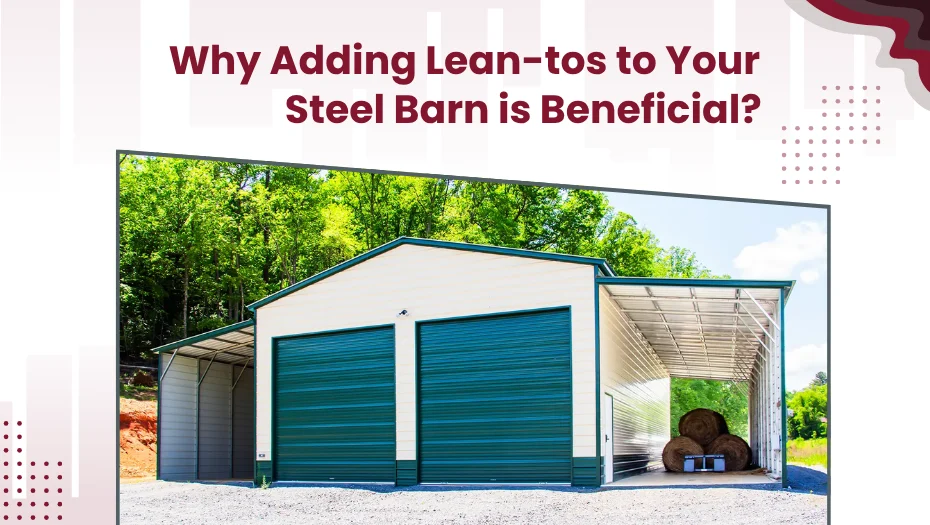
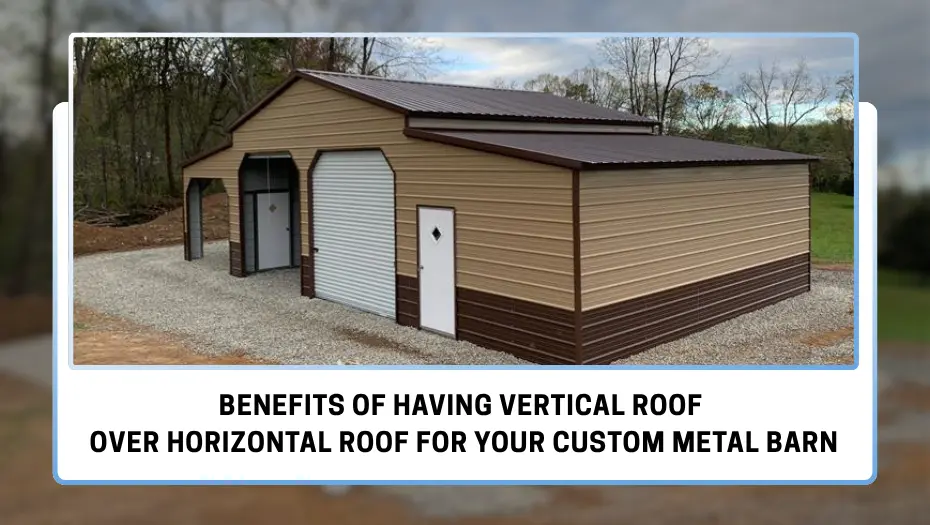


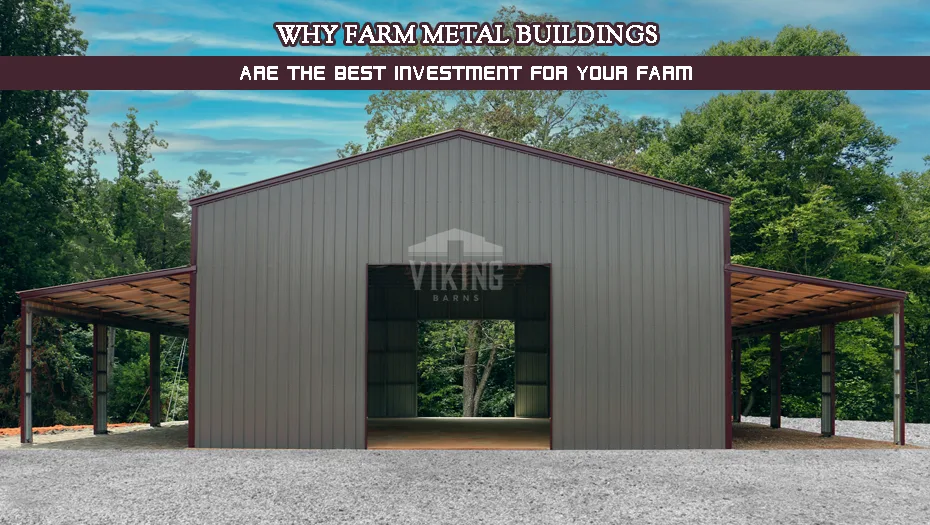

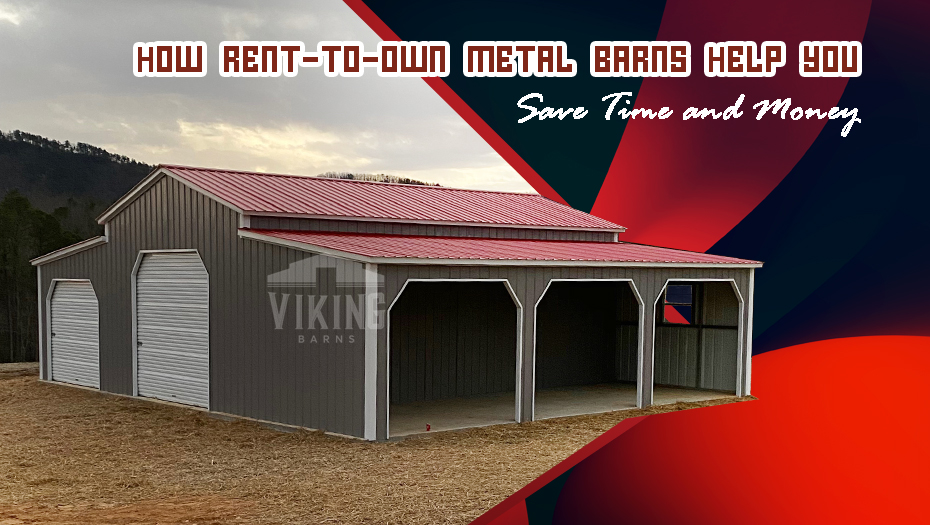
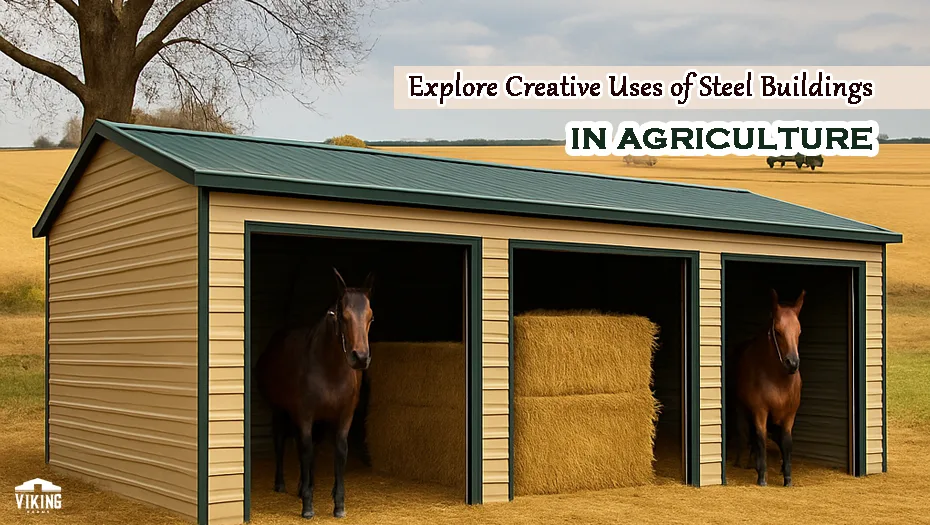
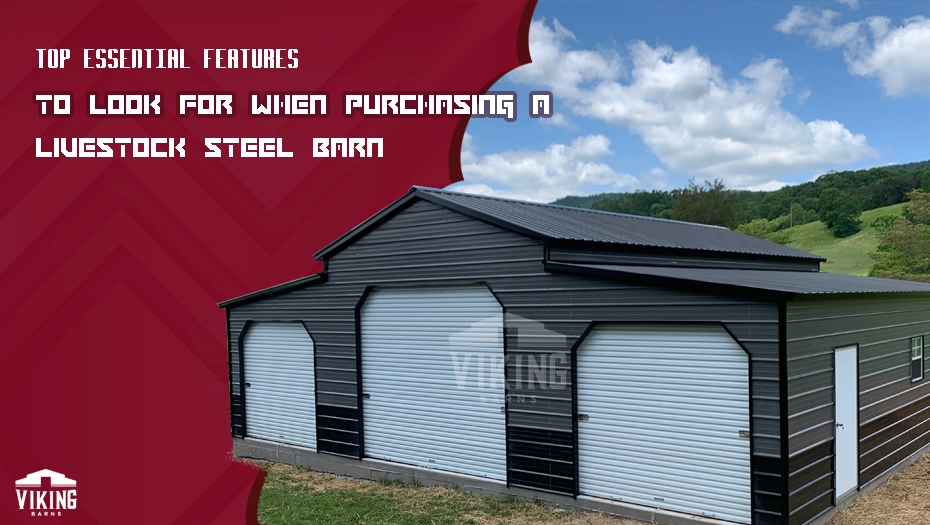


 Alabama AL
Alabama AL

 American Steel Carports Inc.
American Steel Carports Inc.